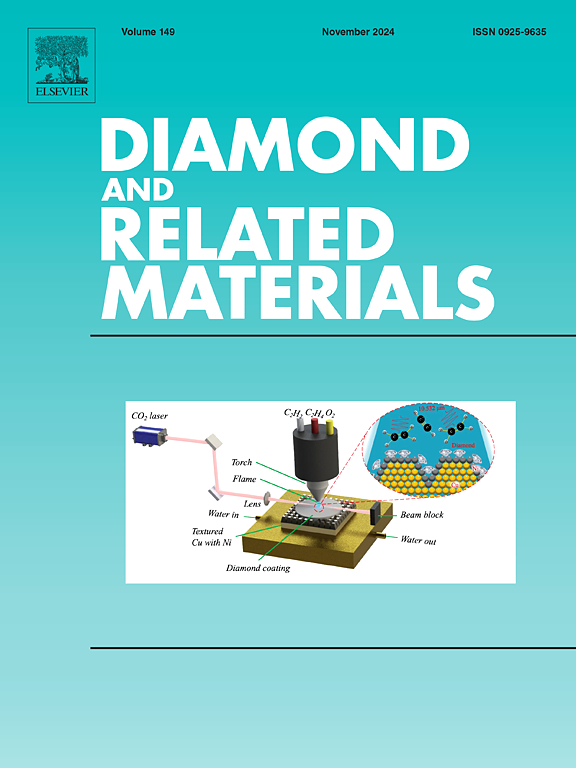Fabrication of green, fluorescent N-doped carbon quantum dots via microwave-assisted method: the effect of microwave power
IF 5.1
3区 材料科学
Q2 MATERIALS SCIENCE, COATINGS & FILMS
引用次数: 0
Abstract
There seem to be fewer research methodically examining the luminous mechanisms of carbon quantum dots (CQDs), despite the general interest in comprehending their features. Preparing N-CQDs with desired optical properties and comprehending the mechanisms underlying photoluminescence (PL) that regulate emission characteristics are the main goals of this work. The functional groups (-NH2, -OH, -CO, -CHO, -COOH, -COO) that form on the surface of the dots have a significant impact on the optical characteristics of N-CQDs. The preparation techniques and the precursor components are the main determinants of the kind and quantity of functional groups. In this study, CQDs were produced using a microwave-assisted synthesis process, beginning with urea and citric acid. The impact of the microwave power level on the surface functional groups on the dots' surface was then carefully evaluated. It was discovered that raising the microwave power level improves the PL by increasing the density of functional groups on the exterior of CQDs. On the other hand, heating at high microwave power lowers the PL intensity and functional group concentration. The produced N-CQDs' stability, catalytic activity, and sensing were investigated. This study emphasizes how surface functional groups affect PL emission and how to physically control them. Fluorescence quenching effect was produced by the addition of Fe3+ and Zn2+ ions to the N-CQD solution. Moreover, the samples were evaluated in the degradation of methylene blue, and the sample synthesized at medium microwave power showed the highest degradation rate. These findings demonstrated the as-synthesized N-CQDs samples can be used as sensors and photocatalyst.

微波辅助制备绿色荧光n掺杂碳量子点:微波功率的影响
尽管人们对碳量子点(CQDs)的特性有普遍的兴趣,但似乎很少有研究系统地检查其发光机制。制备具有理想光学性能的N-CQDs,并了解光致发光(PL)调节发射特性的机制是本工作的主要目标。在点表面形成的官能团(-NH2, -OH, -CO, -CHO, -COOH, -COO)对N-CQDs的光学特性有显著影响。制备工艺和前体组分是决定官能团种类和数量的主要因素。本研究以尿素和柠檬酸为原料,采用微波辅助合成工艺制备了CQDs。然后仔细评估微波功率水平对点表面官能团的影响。研究发现,提高微波功率水平可以通过增加CQDs表面官能团的密度来改善PL。另一方面,在高微波功率下加热降低了PL强度和官能团浓度。对制备的N-CQDs的稳定性、催化活性和传感性能进行了研究。本研究强调表面官能团如何影响PL发射以及如何物理控制它们。在N-CQD溶液中加入Fe3+和Zn2+离子可产生荧光猝灭效应。此外,对样品进行了降解亚甲基蓝的评价,在中等微波功率下合成的样品降解率最高。这些结果表明,合成的N-CQDs样品可以用作传感器和光催化剂。
本文章由计算机程序翻译,如有差异,请以英文原文为准。
求助全文
约1分钟内获得全文
求助全文
来源期刊

Diamond and Related Materials
工程技术-材料科学:综合
CiteScore
6.00
自引率
14.60%
发文量
702
审稿时长
2.1 months
期刊介绍:
DRM is a leading international journal that publishes new fundamental and applied research on all forms of diamond, the integration of diamond with other advanced materials and development of technologies exploiting diamond. The synthesis, characterization and processing of single crystal diamond, polycrystalline films, nanodiamond powders and heterostructures with other advanced materials are encouraged topics for technical and review articles. In addition to diamond, the journal publishes manuscripts on the synthesis, characterization and application of other related materials including diamond-like carbons, carbon nanotubes, graphene, and boron and carbon nitrides. Articles are sought on the chemical functionalization of diamond and related materials as well as their use in electrochemistry, energy storage and conversion, chemical and biological sensing, imaging, thermal management, photonic and quantum applications, electron emission and electronic devices.
The International Conference on Diamond and Carbon Materials has evolved into the largest and most well attended forum in the field of diamond, providing a forum to showcase the latest results in the science and technology of diamond and other carbon materials such as carbon nanotubes, graphene, and diamond-like carbon. Run annually in association with Diamond and Related Materials the conference provides junior and established researchers the opportunity to exchange the latest results ranging from fundamental physical and chemical concepts to applied research focusing on the next generation carbon-based devices.
 求助内容:
求助内容: 应助结果提醒方式:
应助结果提醒方式:


